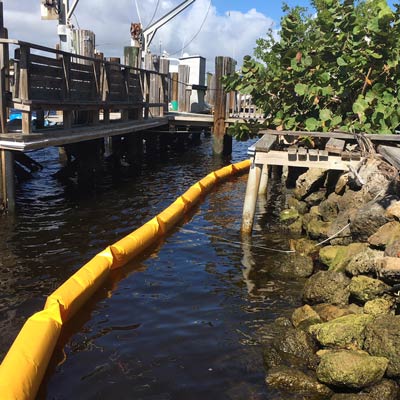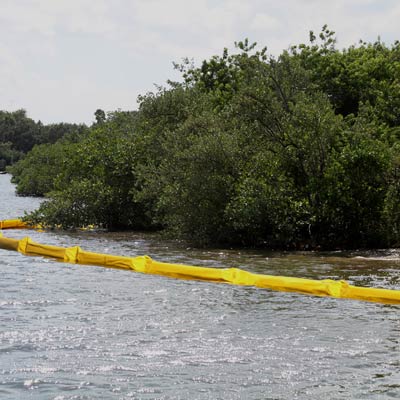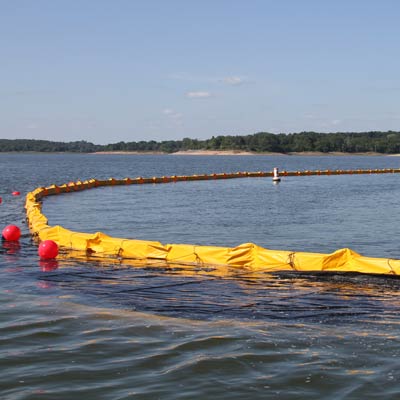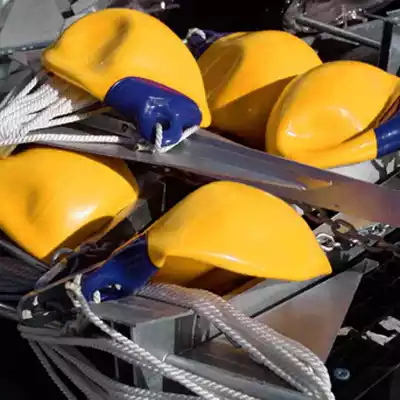Turbidity Barrier Frequently Asked Questions
Turbidity curtains are floating barriers that contain suspended sediment in water so particles can settle. Use the questions and answers below to learn about uses, applications, and installation. For product specific information, see Turbidity Curtain Options.
Have more questions about turbidity curtains? See Type I, Type II, and Type III. Contact Us or call 1-863-261-8388.
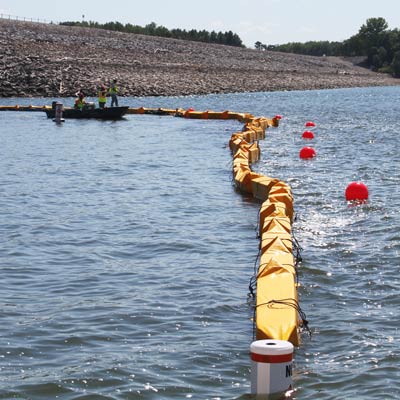
Q1: What is a turbidity curtain and what other names are used?
A: A turbidity curtain is a floating barrier with a buoyant top, a hanging skirt, and a weighted bottom that contains suspended sediment from spreading during various marine based projects. The floating barrier, also known as a silt curtain or silt barrier, protects surrounding water quality and prevents distriubtion to seabeds. Models are available in contractor and DOT compliant styles with permeable or impermeable skirts. See styles available in Type 1, Type 2, and Type 3.
Q2: How does a turbidity curtain work?
A: After deployment and correct anchoring, the curtain forms a controlled work zone to protect surrounding water. The skirt slows water movement and holds suspended sediment in place while particles settle. Impermeable skirts block flow to keep turbid water inside the zone. Permeable skirts allow limited flow while capturing fines.
Q3: Why do you use a silt curtain?
A: A silt curtain helps protect water quality and supports environmental compliance during construction, dredging, shoreline stabilization, bridge and pier work, and other in-water activities by containing sediment at the source before it spreads.
Q4: Who uses turbidity curtains?
A: Marine and civil contractors, public works agencies, DOT water-crossing projects, dredging contractors, and shoreline restoration crews use turbidity curtain while working in ponds, lakes, rivers, tidal zones, bays, and harbors.
Q5: What regulations are applied to turbidity curtains and are these DOT-controlled products?
A: Many projects require DOT compliant silt curtains. We offer DOT styles across Type 1 for calm water, Type 2 for slow-moving water, and Type 3 for strong current, waves, or tidal sites. Always follow your permit, plans, and local or state specifications.
Resources:
Resources:
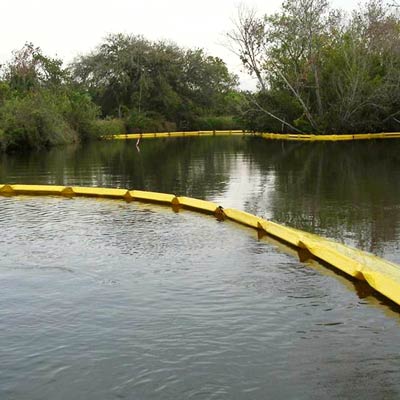
Q6: What is the difference between permeable skirts and impermeable skirts?
A: Impermeable skirts are made with solid PVC to block water flow and keep suspended sediment inside a work area. Permeable skirts are made with filter fabric that allows controlled flow while capturing fines. This can help where some water exchange is useful or where reducing loads on the curtain is important.
Q7: Which type of turbidity curtain should I use?
A: Type 1: calm and non-moving water (ponds, canals, lakes). Type 2: slow-moving water (rivers, lakes, tidal areas). Type 3: strong current, wind, waves, or tidal areas (rivers, coastal zones, harbors). Contractor and DOT options available in permeable or impermeable skirts.
Q8: Can silt curtains be cleaned and reused?
A: Yes. After each use, rinse the curtain and inspect connectors, cables, flotation, fabric, and ballast. Dry completely and replace worn parts. Before moving to a new water body, decontaminate the curtain to prevent invasive species. Remove debris and mud, drain all water, and follow local AIS cleaning and drying guidelines. Use reefing lines to set depth and keep the skirt off the bottom. This reduces wear and extends service life.
Q9: What sizes and depths do turbidity curtain panels come in?
A: Most panels come in 50 ft or 100 ft sections. For depth, plan on Type 1 up to about 20 ft, Type 2 up to about 50 ft, and Type 3 up to about 100 ft. We can customize as needed, and reefing lines let you fine tune the depth on site.
Q10: Should the turbidity curtain touch the floor of the containment area?
A: No. Suspend the skirt about one foot above the bottom. This prevents the skirt from dragging and stirring up sediment, keeps material from piling against the fabric, and allows fish and other aquatic life to pass through. For uneven or varying bottom depths, use varied panel depths or reefing lines to keep the skirt off the floor.
Q11: Are there anchoring best practices?
A: Use an engineered anchor layout matched to site conditions and do not attach anchors directly to the skirt. Proper anchoring keeps the system in position, reduces strain, and improves performance and service life.
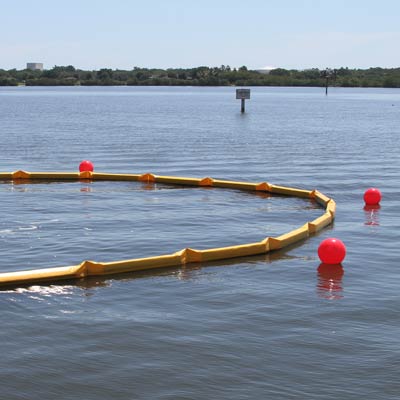
Q12: What is the difference between a floating boom and a turbidity curtain?
A: A floating boom contains material on the surface (oil, trash, seaweed, logs, debris). A turbidity curtain contains floating debris and also controls suspended sediment below the surface.
Q13: How do I install a turbidity curtain?
A: Installation includes connecting, deploying, and anchoring the curtain in the planned location. Site conditions, available equipment, and operator experience can affect the plan. See the Installation Guide for step-by-step details.
Q14: Do I need lights for a floating silt barrier?
A: Check local requirements for lighting on public waterways. Night lighting improves boater safety and helps protect the barrier. View our accessories page to see all additional accessory options.
Q15: What is a tow bridle and why is it important?
A: A tow bridle is used to move the curtain during installation or relocation. It reduces stress on the curtain fabric and helps deliver the barrier safely to the installation location. It can also be used for shore anchoring when appropriate.
Q16: Do your turbidity curtains meet Canadian regulations for erosion control?
A: We can ship to Canada, but regulations and compliance vary by province and project. Please check with your local authority having jurisdiction, and we can help you select the right product for your local requirements.
Have more questions about turbidity curtains? See Type I, Type II, and Type III. Contact Us or call 1-863-261-8388.

